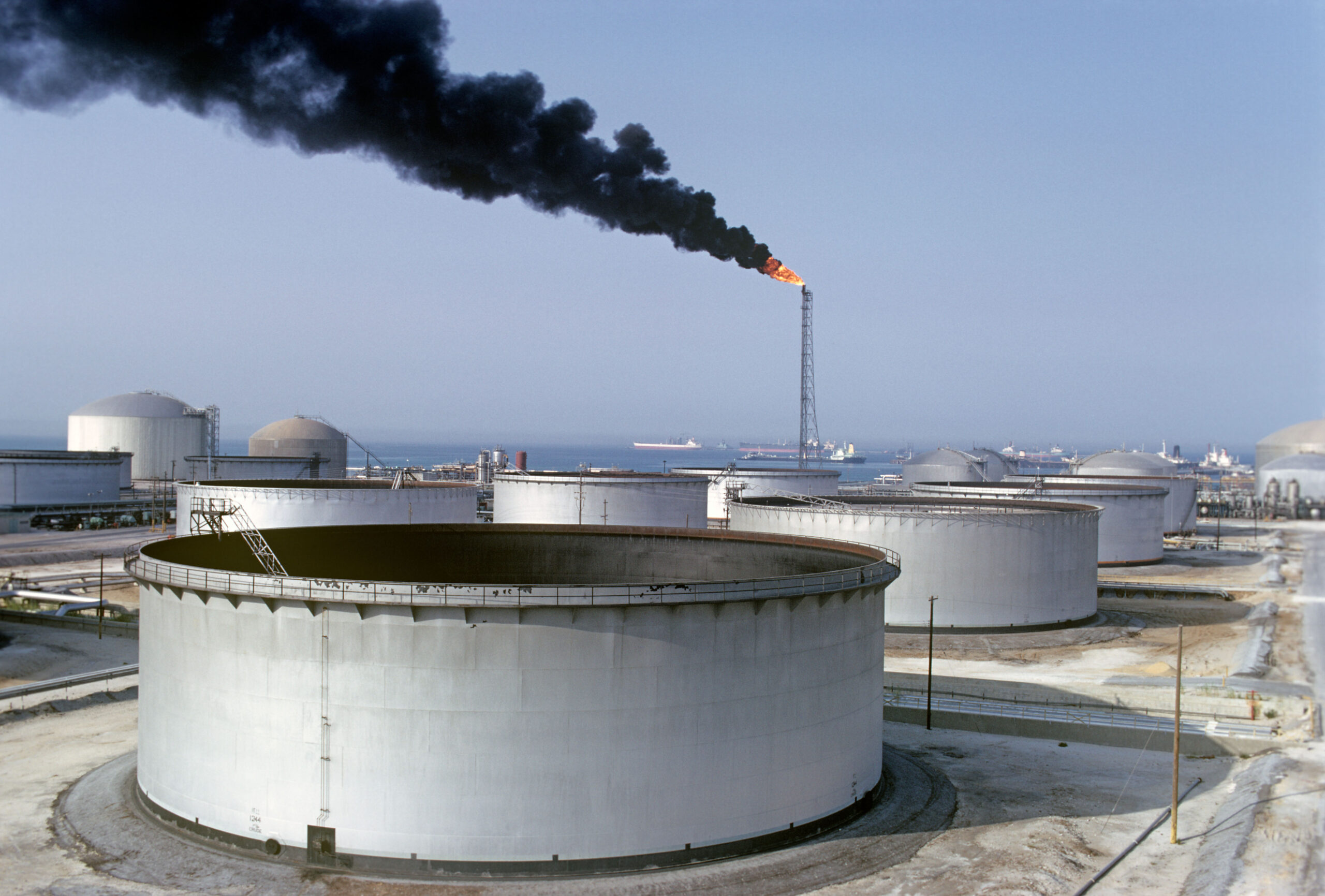Climate pressure is tilting the global oil business in favour of the giant state-owned oil companies in the Persian Gulf. As oil demand plateaus and starts to decline, these firms have market advantages that will allow them to dominate shareholder-owned oil companies which face a tougher regulatory and price environment.
This dichotomy is emerging as one of the sideshows of the 2021 26th Conference of the Parties (COP) Conference in Glasgow, where producer governments’ decarbonization goals are intertwined with their dependence on domestic oil industries.
On one side, the Gulf national oil companies (NOCs) enjoy substantial advantages in cost, and for some in carbon emissions. The big NOCs also count upon government help in deflecting external climate pressure as a matter of national sovereignty. On the other side are the publicly traded international oil companies (IOCs), including western IOCs. These firms are exposed to increasing legal, financial and political pressure associated with their roles in the climate crisis.
The diverging fortunes of global oil producers may result in NOCs, which already control at least 70 percent of global reserves and a minimum of 55 percent of production, increasing their dominance over the worldwide oil market as IOCs broaden their participation in non-oil energy businesses.
Gulf NOCs such as Saudi Aramco, the Abu Dhabi National Oil Co., and Kuwait Petroleum Corp. are particularly advantaged by their low-cost oil production—just USD 7.50 per barrel in Saudi Arabia, including capital investment costs. Typical breakevens range from USD25-USD50 per barrel among oil supermajors, depending on geology and site specifics (for more information see page 82).
Many of the big NOCs are also beginning to tout the low carbon intensity of oil production. The intensity of upstream emissions differs broadly among crude grades. Upstream contributions to lifecycle emissions (including final combustion) might render one type of crude oil as much as 25% less carbon intense than a competing grade. Upstream emissions range from roughly 5 grams of CO2 per megajoule of energy output (for efficient producers like Saudi Arabia or those that impose strict environmental standards, like Norway) to more than 30g CO2/MJ for extra-heavy Canadian, Venezuelan, and Californian crudes. Upstream emissions comprise anywhere from 5% to 30% of total emissions (for more information see page 487).
Reserves also skew in favour of the NOCs. Saudi Aramco’s 227 billion barrels of untapped reserves are five times the combined reserves controlled by the big five IOCs, ExxonMobil, Chevron, Shell, BP, and TotalEnergies. Besides enjoying supportive governance, Gulf NOCs face little or no climate pressure from shareholders, institutional investment funds, or home country regulators. On the contrary, government officials in these countries have let it be known that they have no plans to exit the oil business as long as oil demand remains. Outside the Gulf, NOCs in Iran, Iraq, Russia, China, and Mexico enjoy similar state support, although most lack the carbon advantages of the Gulf Arab NOCs.
A very different set of constraints now faces the big five IOCs and other shareholder-owned oil firms. Climate-based activism has disproportionately targeted these firms despite them controlling smaller resource bases and production. Public ownership of shares has proven an avenue for activist engagement and pressure, while their headquarters locations have exposed them to transparent legal and regulatory systems that have enabled climate-based lawsuits, divestment campaigns, and proxy battles that appear to be undermining the firms’ public standing and altering investment strategies.
The pressure is already resulting in changes in business plans of large IOCs as they shift toward lower-carbon energy. An increasing number of publicly traded oil firms are pledging full decarbonization to “net zero” emissions, including Shell, TotalEnergies, BP, ConocoPhillips, Equinor, ENI, and several others.
Some have sold their most polluting assets to smaller firms, decreasing transparency around emissions and probably increasing the timeline of those assets releasing greenhouse gases. Others appear willing to reduce upstream investment and allow natural declines to cut production. Suppose declines in IOC oil output are not matched by corresponding reductions in global demand for oil. In that case, production will simply shift to companies enjoying less exposure to shareholder actions, including those in countries that insulate their firms from such action. OPEC+ and its big NOCs could benefit and capture market share.
Low-cost producers like the Gulf NOCs were already expected to survive under climate constraints due to their ability to cope with lower market prices. Compounding the advantage are tax and carbon preferences encouraging lower-carbon oil such as California’s, which are already increasing the marketability of oil from cleaner producers, especially Saudi Arabia.
What does all this have to do with the Glasgow COP?
Since climate policy and oil marketing strategy are nearly indistinguishable among major producers like Saudi Arabia—where oil ministries tend to formulate climate responses—the COP provides a valuable forum for influencing the direction of otherwise well-protected oil companies.
One critical tool for reducing the carbon profiles of Gulf oil is through carbon taxation and border adjustment tariffs in importing countries. The European Union’s Carbon Border Adjustment Mechanism could eventually provide such a service if it were broadened to cover fuel imports. Tariffs that differentiated among oil products and petrochemicals by accounting for pre-combustion emissions—i.e. emissions from production and conversion of oil and gas into final products—could ignite virtuous competition on carbon content.
Carbon competition could then shift to offsetting or capturing emissions from combustion—the so-called Scope 3 emissions. As yet, Saudi Aramco and other NOCs have no plans to target Scope 3 emissions in the vein of European IOCs, including three of the big five.
In short, while climate pressure is inevitably shifting market share toward the more protected national oil companies, Glasgow participants can influence the process by creating incentives for these firms to improve their carbon competitiveness. A prime example is carbon taxes and border tariffs that differentiate among grades of crude oil by carbon intensity.
The views expressed in the Near East Policy Forum are those of the authors and do not represent the views of the Near East Policy Forum or any of its partner organisations.




